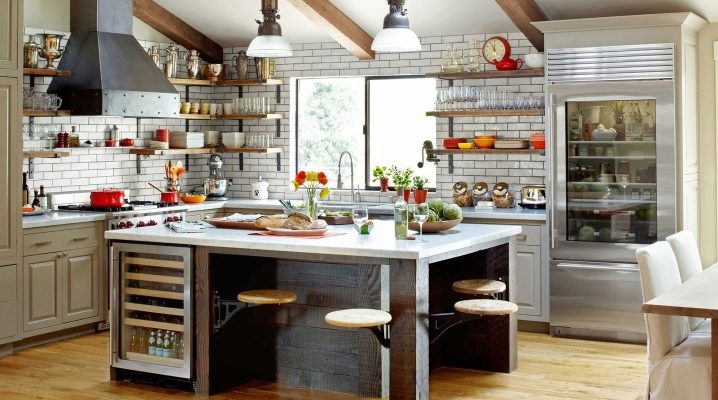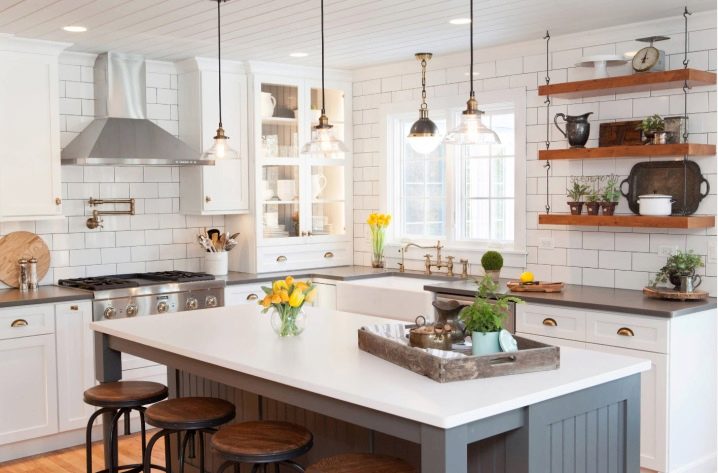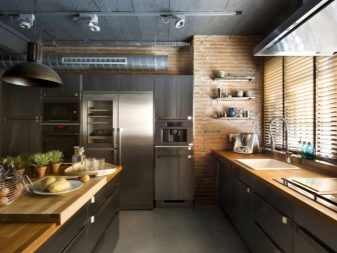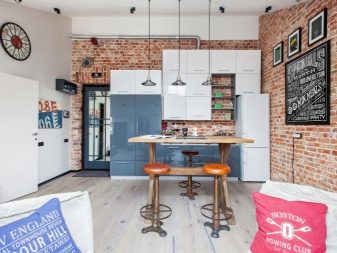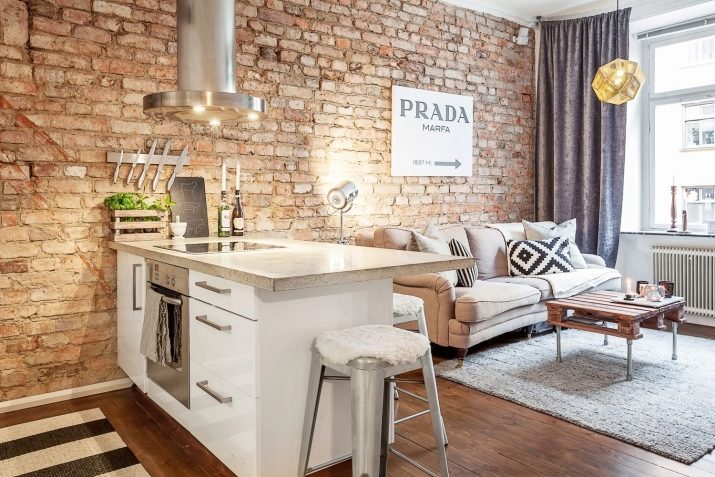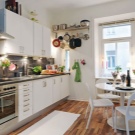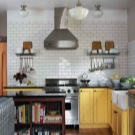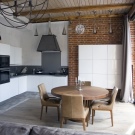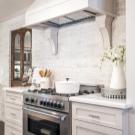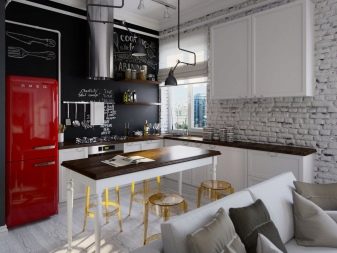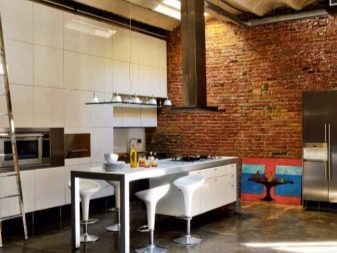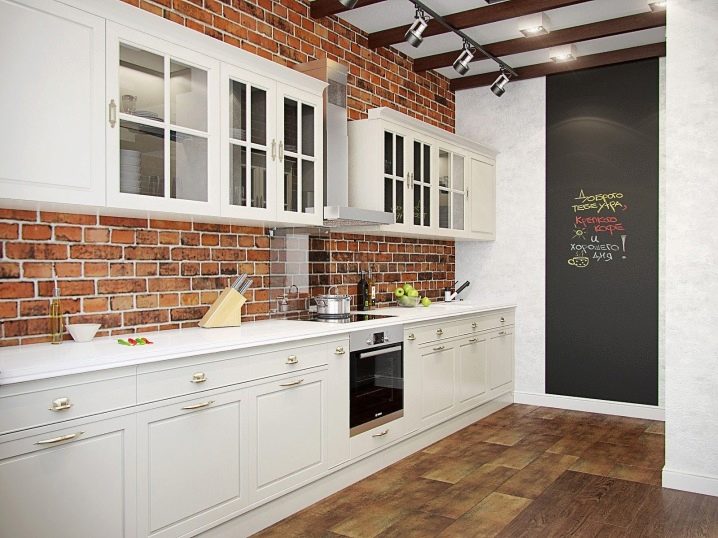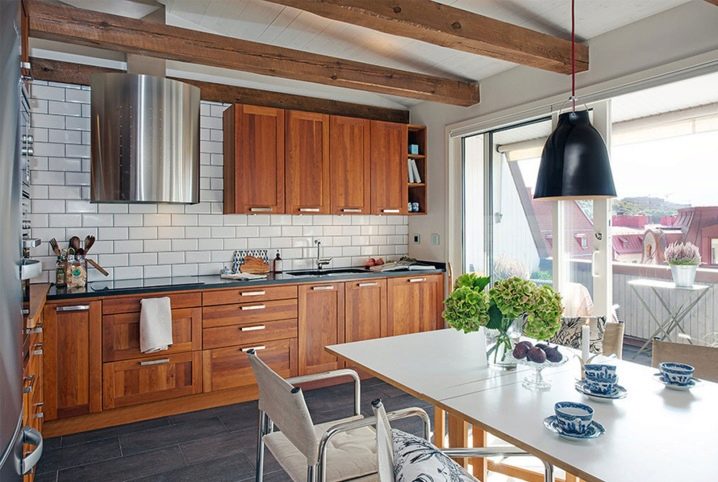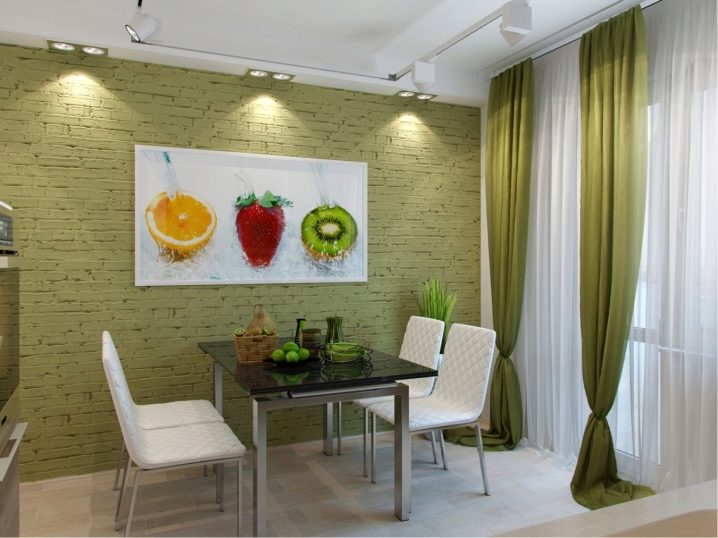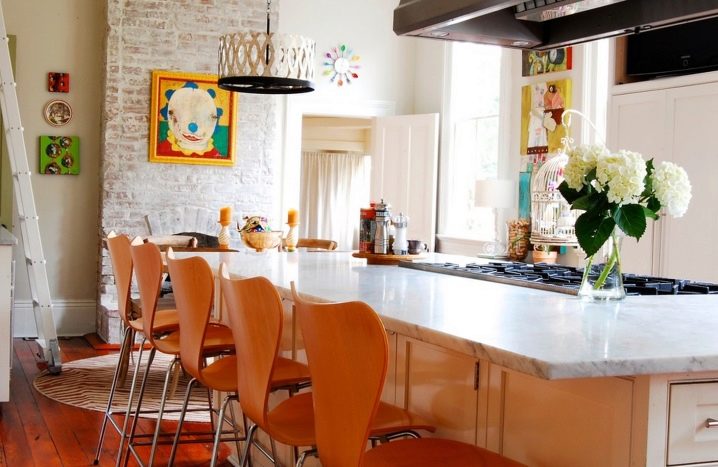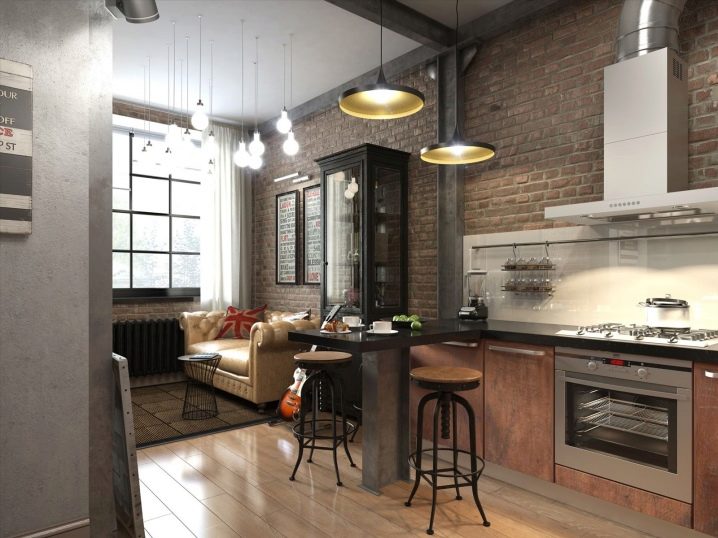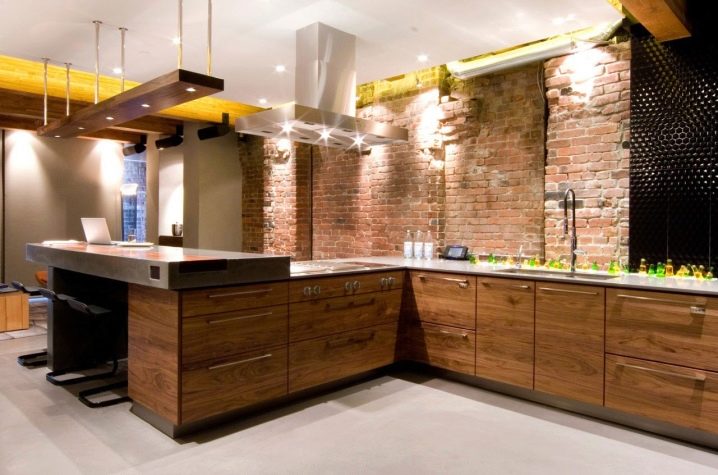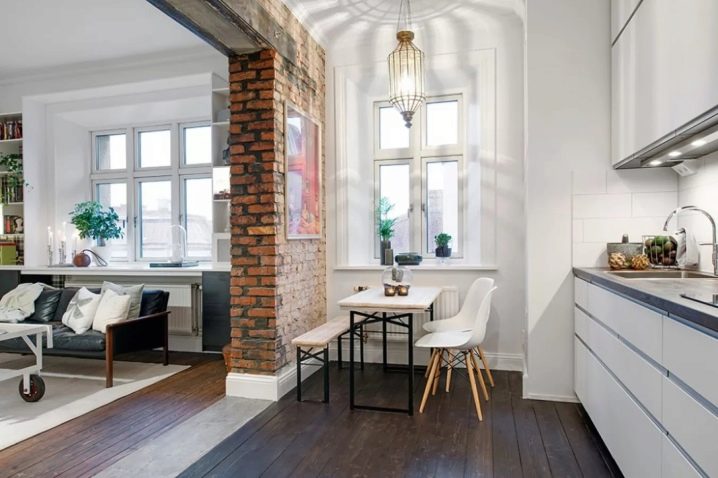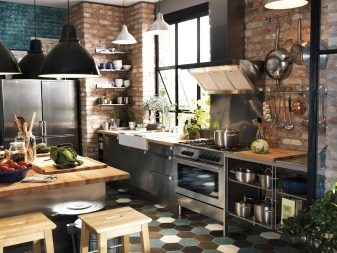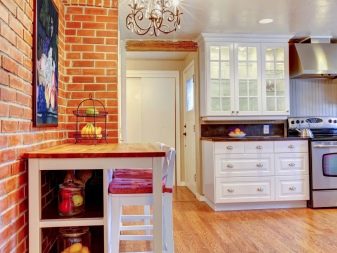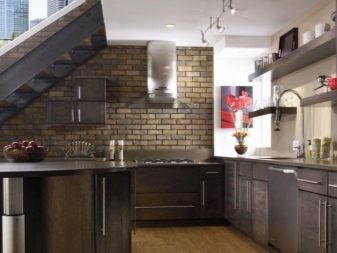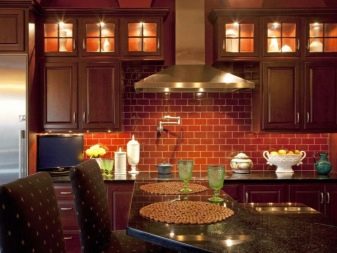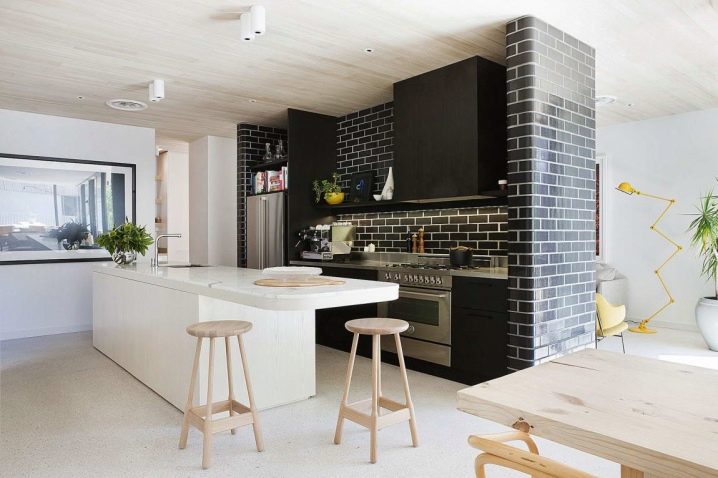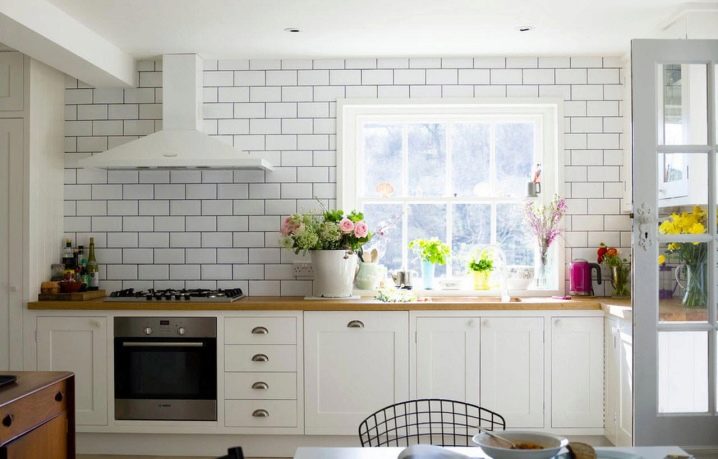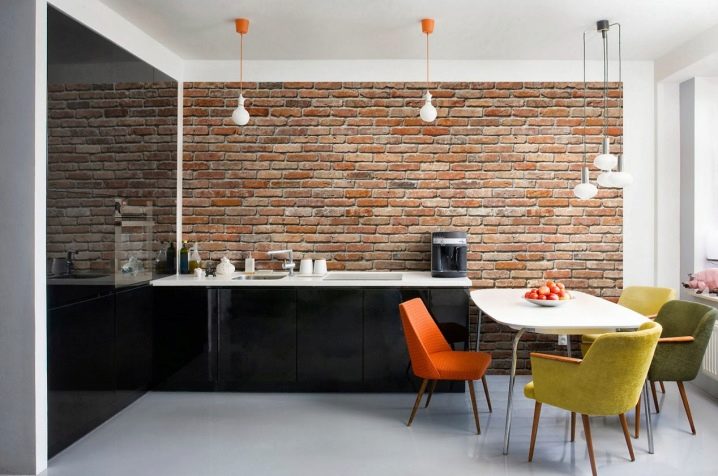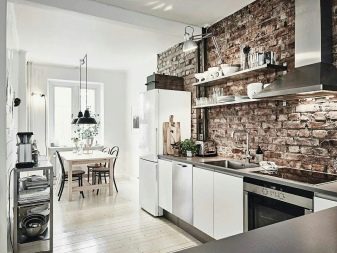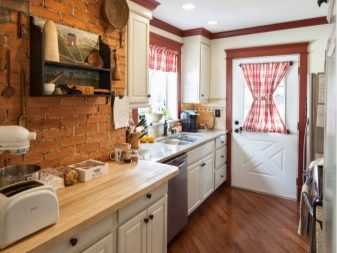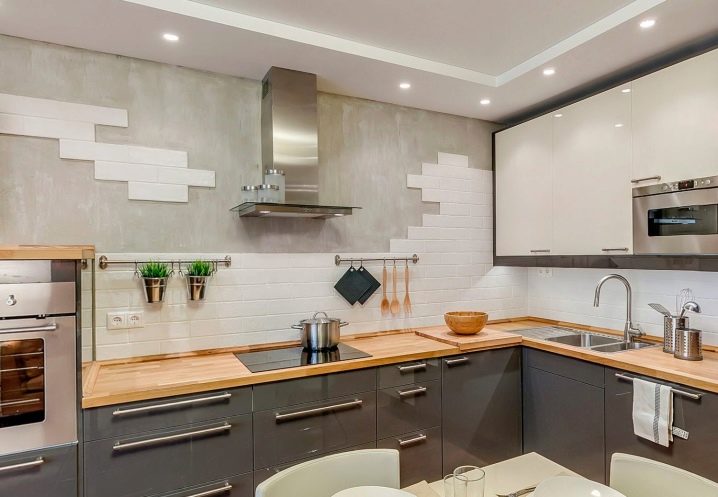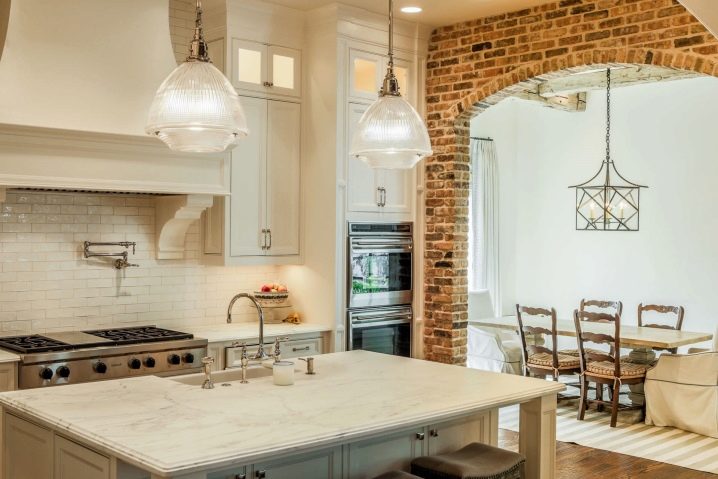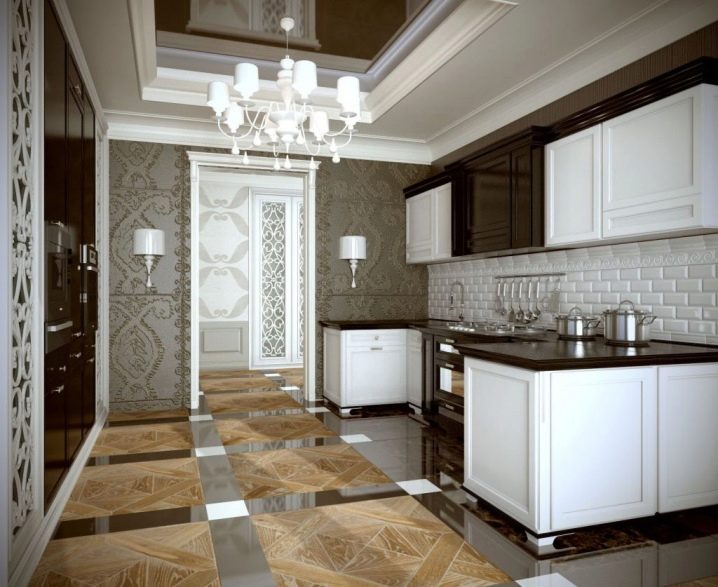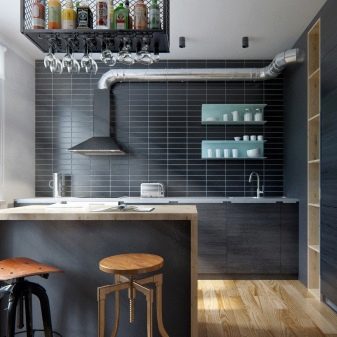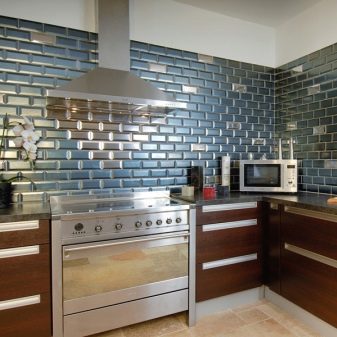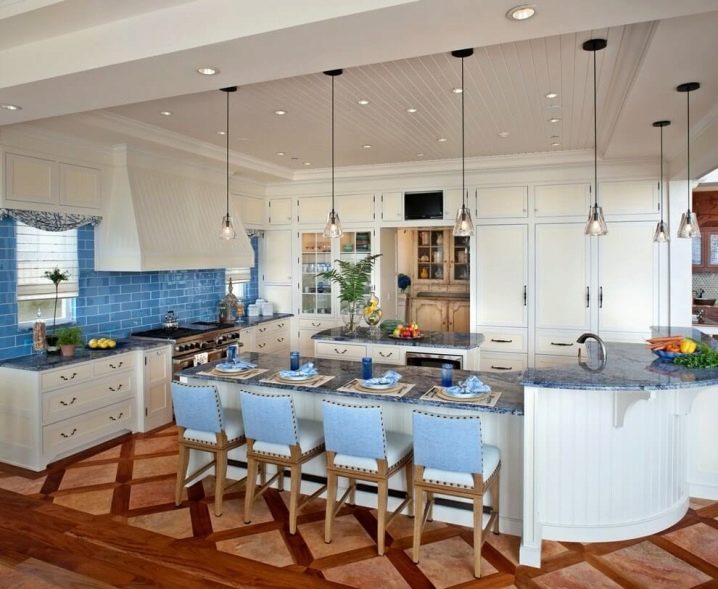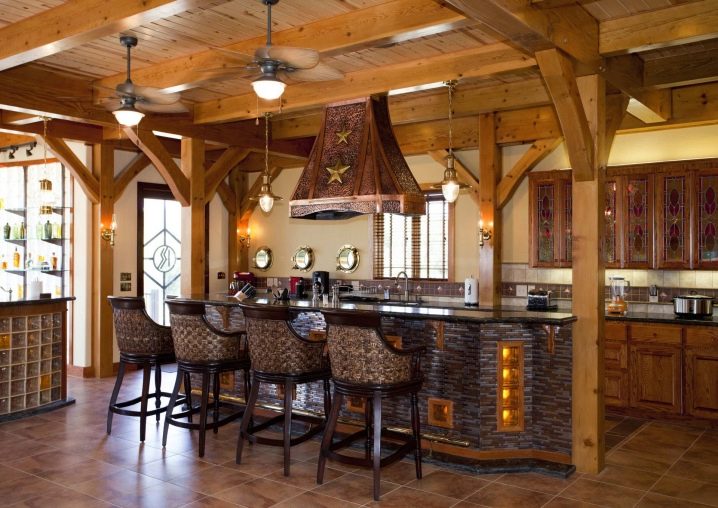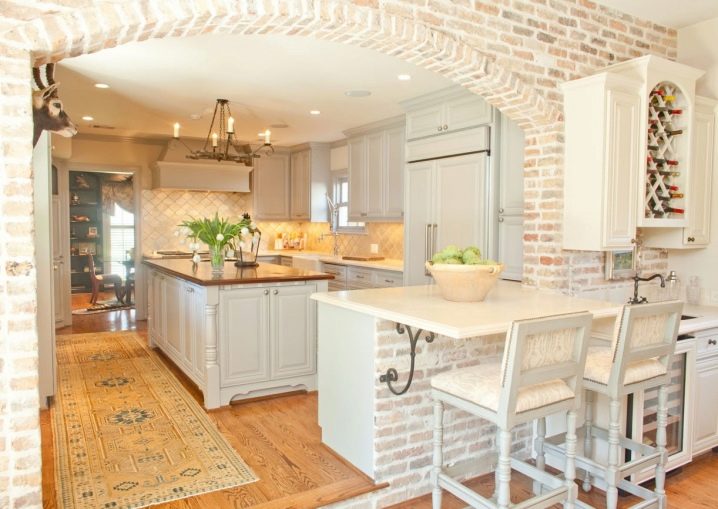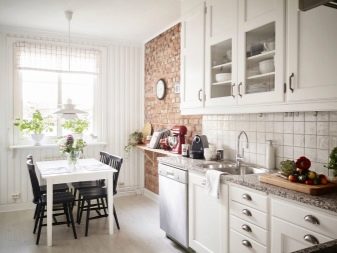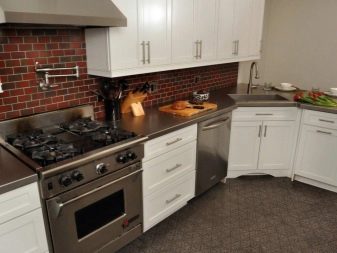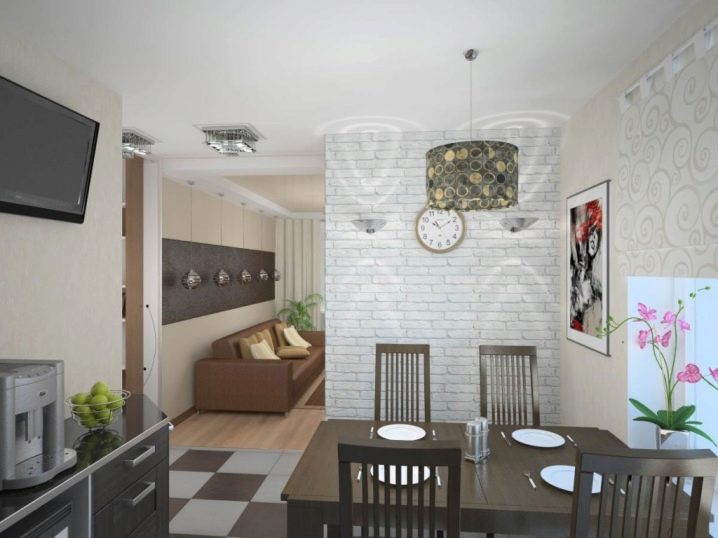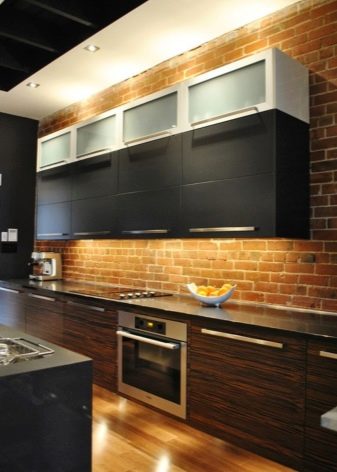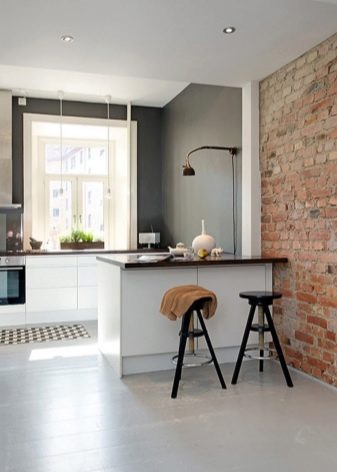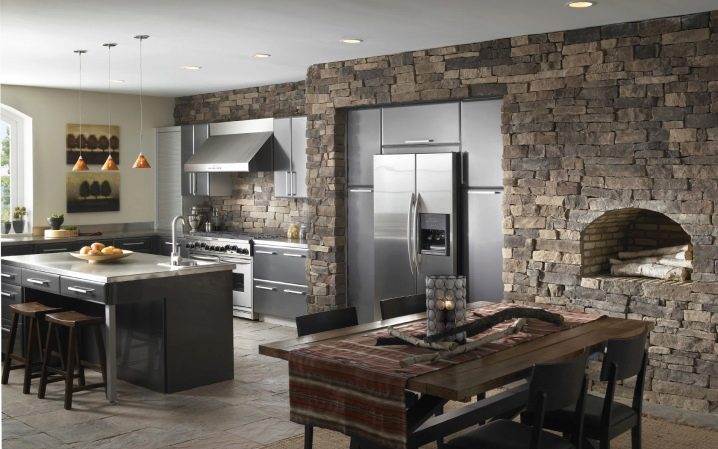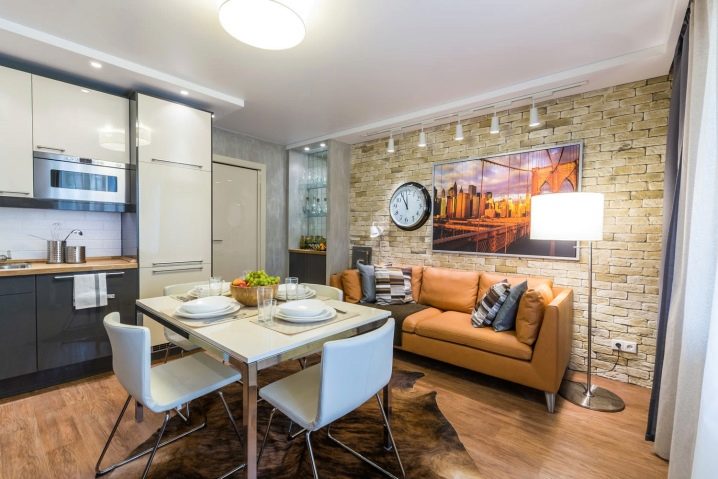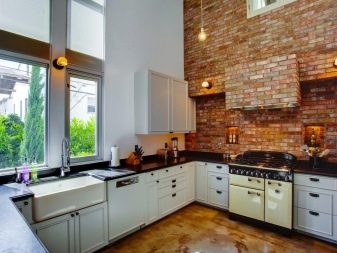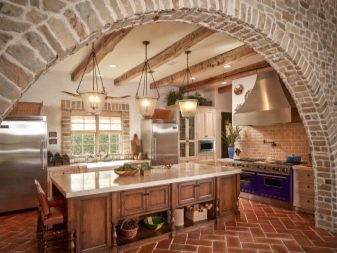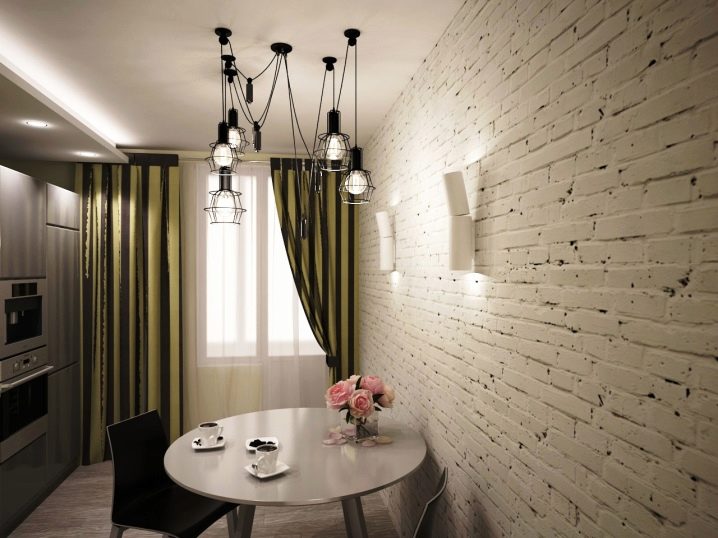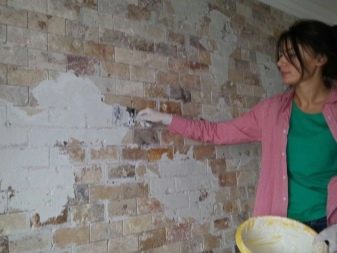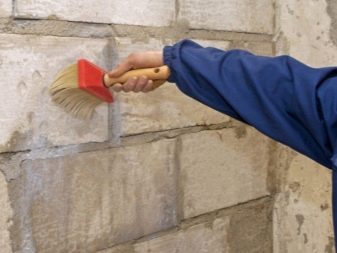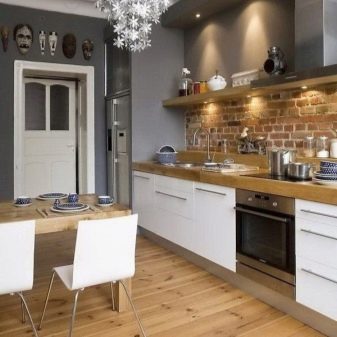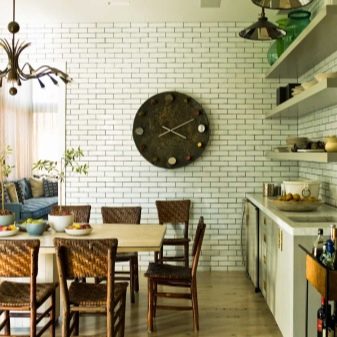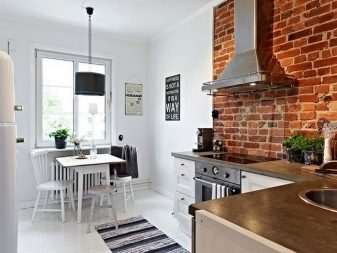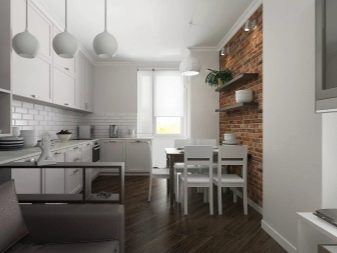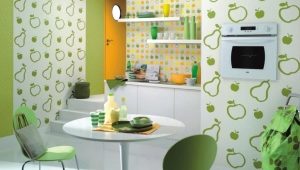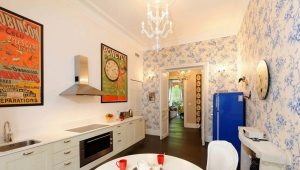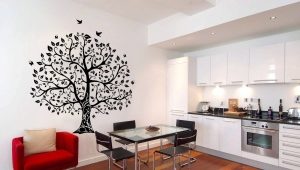Brick wall in the kitchen
Argued that brick is used only in capital construction. But this is not the only application of this material. He is well established in the design of interiors, especially actively used by decorative brick designers in the kitchen.
Due to the presence of brick blocks, the room becomes cozy, homely, and people arriving in the kitchen relax, feel more comfortable, protected.
To decide to make such an article in your own home, just look at the photos of the stunning beauty of kitchens and canteens, where masonry was used. Making it yourself is pretty easy.
The advantages of using bricks in the interior
The advantages of this finishing material quite a lot. This is strength, durability, moisture resistance, resistance to sudden temperature changes, ideal compatibility with other materials. In addition, the brick wall is equally good against the background of modern and classic interiors.
Brick features:
- affordable material;
- does not need additional finishing;
- even a person who does not have experience in construction work can make a brick wall;
- technical properties of brick blocks provide sound and thermal insulation of the kitchen.
The most important thing in the interior where brickwork is used is dosage. If you leave all the walls brick, the effect of spiritual home environment will not. A sense of proportion should be in everything.
Brick wall features:
- ideal variant of division of space into separate functional zones;
- is a great backdrop for a decor;
The disadvantages of brick blocks
Although the brick has many positive properties, it has its drawbacks: it is not the most practical material, as it has a heterogeneous structure, and in the seams between the blocks there is dirt and oil droplets flying from the hot frying pan. For a brick wall you need to constantly monitor, clean and care.
In the kitchen with such an unusual decor will have to install additional lighting. Natural brick absorbs light, so if its quantity is insufficient, it will be quite dark in the room.
Lack of coverage is not the only problem. An overabundance of brickwork in the interior leads to a visual reduction of the room, it becomes cramped and gloomy.
Types of bricks
To create a wall or decor of brick in the kitchen interior are the following options:
Natural brick
In the old houses, almost all interior walls are made of brick, and this moment the property owners successfully use. By removing the wallpaper or plaster layer from the masonry, and having painted the brick with paint or varnish, you can get an original brick wall, which you do not need to shift.
An additional layer in the form of a varnish or paint will not only make the picture more attractive, but also protect the natural brick from dirt that often appears in the process of cooking. Alternatively, you can close the wall with glass cloth of the appropriate size. Often plaster is applied on brickwork or deliberately aged (method of decoration depends on the style of the interior).
Facing brick
This type of brick is small in size and flat surface - an ideal solution for small kitchens. This means that he does not "eat up" space.
Due to its shape, it is convenient to decorate walls with such bricks, and its wide range allows you to select the desired color and relief.With the help of facing bricks, you can beautifully arrange window openings, make a working apron or panel in the kitchen.
Ceramic tile, made "under the brick"
This type of facing material is suitable for different styles, because it has different shapes and structures. Rectangular plates are used for modern, square - for high-tech, and rough, imitating natural stone, perfectly fit into the interior of country style, Provence.
Other materials similar to a brick wall
Steklokirpich and wallpaper with a pattern. If you can not make a real brickwork, washable vinyl wallpaper with a brick pattern will successfully replace a real brick.
Where better to use
Most often, a brick wall in the kitchen is made in country-style or loft-style houses. Of course, this is correct, but modern brick in the form of a finishing material is more multifaceted, it is perfectly combined with other styles.
For example, white brick clinker focuses on surfaces and chrome and glass, being a widely used designer detail of modern kitchen in high-tech style.
The same brick will be a godsend for a room created in the Gothic style.If from the first days of its existence the wall was lined with ceramic brick at the table, then the necessary shade for the above style is given to it with paint or left as it is.
The brick wall in the art deco kitchen also evokes pleasant emotions. Restrained shades of coffee shades of brickwork make it noble, but at the same time strict - what you need for an elite and luxurious interior.
In the style of minimalism brick will make some extravagance, but in this case you need to use this type of decor very carefully. Experts recommend to paint the masonry with a suitable color, for example, black. The black kitchen best reflects the minimalism style.
For warm Mediterranean style brickwork will be a bright decoration. Also facing brick blocks can be used for framing arches, ceiling arches, etc. They are perfectly combined with wooden elements.
A strict Gothic style brick wall can elegantly diversify, but here you need to clearly understand what color and method of cladding to choose so that the kitchen doesn’t turn into a basement.
In classical interiors, brick elements are used to create a separate wall or for lining certain furniture items, for example, a bar counter.
Expert advice
The main rule, voiced by designers, is as follows: when decorating a kitchen interior with a brick wall, it is impossible to organize an apron of the working surface with the same material. The reason is quite simple - the low hygroscopicity of this finish and its rough surface, which make it difficult to care.
True, modern experts have found a way out of the situation, the brick surface is successfully treated with a special colorless varnish, but this solution does not always justify the investment. Sometimes it is more expedient to replace brick masonry with facing tiles that imitate brick masonry, but withstand much more aggressive factors of kitchen influence, and it is also easy to clean.
If you have difficulties with the choice of the wall on which the brickwork will be laid, you need to look at the natural lighting. Based on where the sun's rays will fall, there you need to make a stone wall.
You should not decorate all existing walls with brick blocks either, no matter what style you choose, completely brick walls will make the kitchen room look like an old basement. It is better to use masonry as a binding element for other finishing materials.
Lighting should be as much as possible. The brick does not reflect light, and without additional lighting the room will be very dark.
Bedside tables and cabinets work surface of the kitchen with facing bricks can also be successfully arrange. Thanks to the masonry, you can get an original copy of this fireplace. The ceiling can also be made with bricks, but such a bold decision in apartments will not be appropriate, it is suitable only for country houses.
Usually, a brick wall is left in its natural form, but if design conditions are required, it can be painted in the desired color.
Rules for painting a brick wall:
- Paint the wall in a new building is not the best solution. The end result will unpleasantly surprise property owners. Not earlier than after a year of living, you can achieve the desired effect;
- To clean the wall from the "efflorescence" you need a stiff brush and only water. Acid solutions should not be used;
- Before painting, it must be ensured that the wall is completely dry. All work is best done in the summer, in warm weather. This is the only way to avoid cracks and swellings, and the paint will dry out very quickly;
- The surface before painting should be primed.
It is possible to paint old brick walls only after restoration work. Thus, it is possible to significantly improve their appearance. This will require:
- remove the plaster layer and cement residues;
- to level cracks and chips with mortar;
- saturate the masonry with a product that protects the brick from environmental factors.
A brick is an original decorative detail, therefore it is not necessary to saturate the interior with it, it should be present in the room.
Thanks to the brick wall, you can successfully distinguish the functional areas of the kitchen, for example, the dining part of it. The main thing is to take into account the size of the room and only then make a brick wall that is in the best way to be in harmony with other finishing materials.
